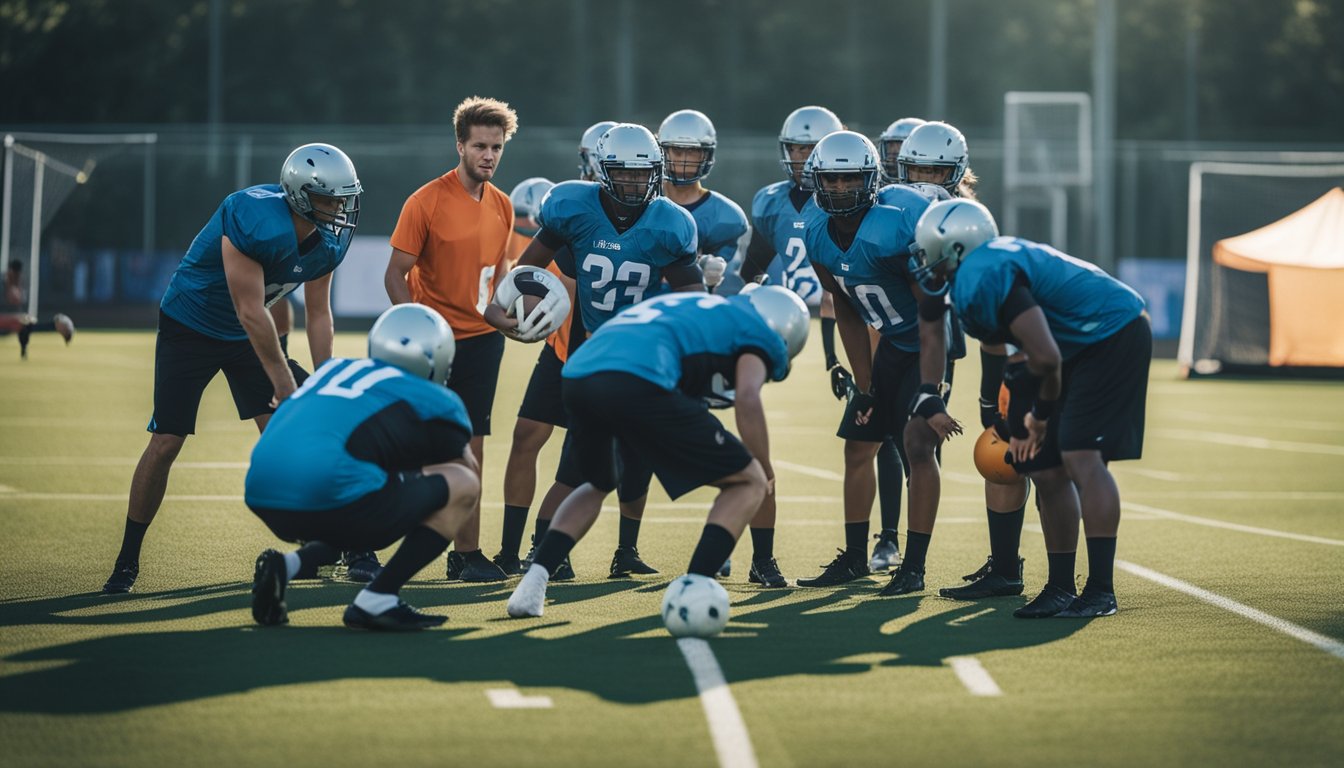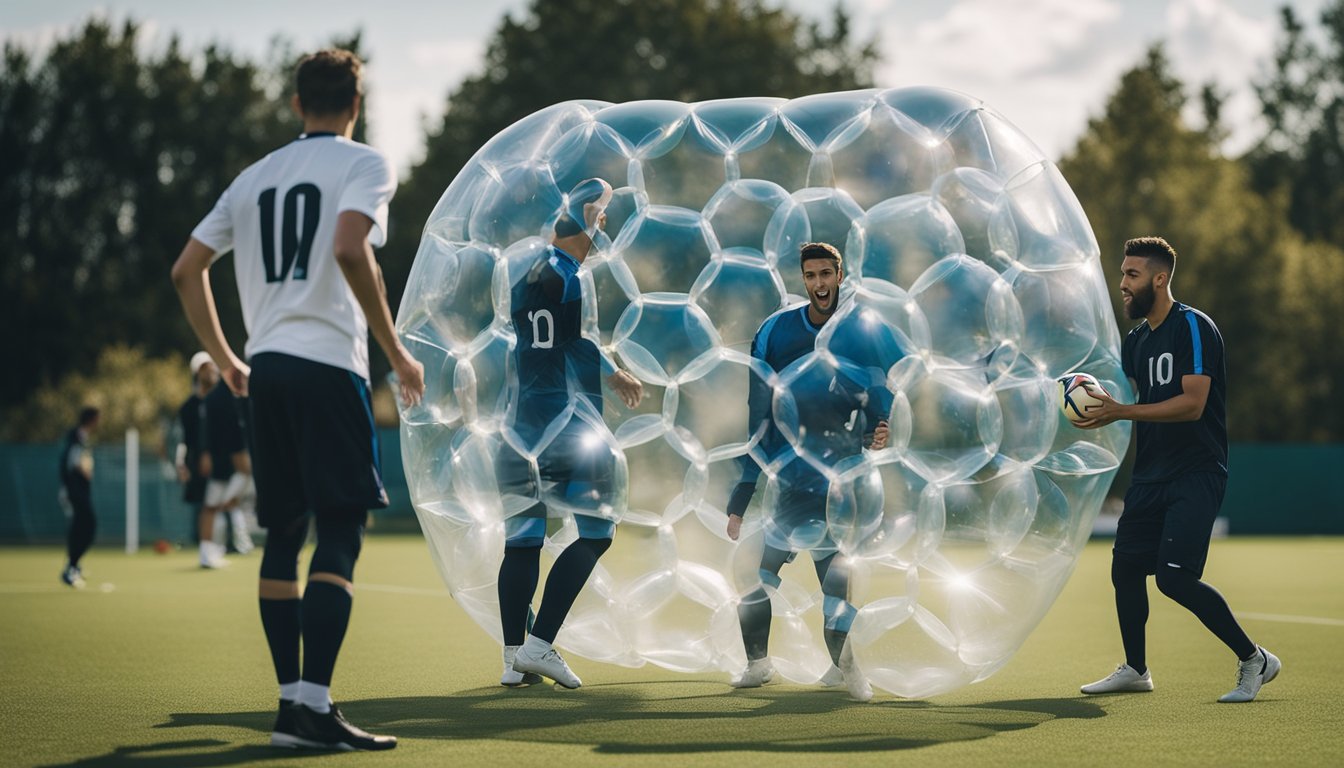Late updated: 16 Aug 2024 16:08
Written by: Emma Saunders
Bubble Football Strategy Tips: Maximising Your Team's Performance
Bubble Football Strategy Tips that Elevate Your Game

Welcome to our Bubble Football Strategy Tips guide! Whether you're new to the sport or a seasoned player, mastering effective techniques can transform your performance on the bubble battlefield. In this blog post, we'll explore some key tips to help you and your team excel in Bubble Football, merging fun with strategic brilliance.
In Bubble Football, understanding the fundamentals is crucial. Effective communication within the team, focusing on offensive and defensive strategies, and mastering basic manoeuvres are essential. By synchronising our moves and reading the game's flow, we can outmanoeuvre opponents and maximise scoring opportunities, making the sport even more exhilarating.
Beyond the basics, delving into advanced tactics can give us the edge over our competition. Emphasising intricate play formations, robust defence, and agile zorb handling will ensure that we remain dominant on the field. As bubble football continues to grow in popularity, becoming proficient in these strategies guarantees a memorable and successful experience.
Key Takeaways
- Key fundamentals include effective team communication and basic manoeuvres.
- Advanced tactics focus on intricate play formations and robust defence.
- Mastery of these strategies enhances performance and overall game enjoyment.
Fundamentals of Bubble Football
Bubble football combines the basic rules of traditional football with bubble suits that players wear, adding a unique and entertaining twist to the game. This fun-filled sport demands an understanding of the game rules, key roles on the pitch, and stringent safety measures.
Understanding the Game
Bubble football is played by two teams, typically each with five to seven players, on a football pitch. Players wear bubble zorbs, large inflatable balls that cover them from the knees up. The objective is to score goals while bumping, bouncing, and sometimes rolling over due to the bubble armour.
Matches are usually supervised by a referee who ensures that the standard football rules are adapted to accommodate the bubble suits. Physical contact is encouraged but within safe limits, making defensive strategies both unique and essential. The attacking players aim to break through the defensive line and score, while defenders disrupt these attempts.
Key Positions and Roles
Key positions in bubble football mirror those in traditional football.
- Quarterback: Similar to a quarterback in American football, this player acts as the team’s playmaker, initiating attacks and creating scoring opportunities.
- Wide Receiver: This role involves running wide to receive passes and attempt to score, exploiting gaps in the defence.
- Running Back: Tasked with advancing the ball, navigating through defenders and capitalising on their agility despite wearing a bubble zorb.
- Offensive Linemen and Defensive Linemen: These players are crucial in forming the frontline, either protecting the quarterback and receivers or trying to block the opposing team's advances.
Each player needs a mix of agility, strength, and tactical awareness. Positioning is key, with players needing to anticipate movements and respond quickly due to the bulkiness of the bubble suits.
Safety and Equipment
Safety is paramount in bubble football. Players must wear appropriately sized bubble suits that fit snugly but comfortably to prevent injuries. Bubble zorbs, also known as zorb football kits, absorb impacts and protect players during collisions.
Essential equipment includes:
- Proper Footwear: Trainers or football boots with suitable grip for traction.
- Bubble Armour Maintenance: Regular checks and maintenance of bubble suits to ensure they’re free of damage.
- Referees and Supervisors: Ensuring adherence to safety rules and fair play during the game.
Our main priority is the well-being of all participants. Therefore, players must adhere to safety guidelines, and teams should be vigilant about equipment checks before every match.
Advanced Offensive and Defensive Strategies

In bubble football, success hinges on a blend of pinpoint offensive plays and robust defensive techniques. The strategies for both aspects are complemented by effective team communication and dynamics, which are crucial for outmanoeuvring opponents.
Developing Offensive Play
To achieve success in offensive strategies, precision and timing are crucial. We need to employ a variety of offensive plays that keep defences guessing. This includes both running plays and passing plays. Using motion and variation in the spread offence, we can open up significant yardage.
Short passes and high-percentage passes help maintain possession while minimising turnovers. Effective blocking is key to allowing our offensive players to execute these plays without disruption.
Moreover, utilising a running back in the backfield, and occasionally leveraging trick plays, adds unpredictability to our game. Recognition of the opponents' defence alignments before the game is fundamental to planning our offensive strategies.
Mastering Defence Techniques
On the defensive side, our primary aim is to thwart the opponents' advancements and force turnovers. Implementing zone coverage limits the space available for passing plays, requiring precise footwork and swift recognition of offensive patterns.
Aggressive defences, such as corner blitzes, can increase pressure on the opposing quarterback, forcing hurried throws and potential interceptions. Our defence needs to be adept at switching between man-to-man and zone coverages to maintain unpredictability.
Blocking and tackling techniques should be practised rigorously to ensure they are second nature during matches. This includes understanding the nuances of placing pressure without committing fouls, as well as defending against high-percentage pass plays.
Enhancing Team Communication and Dynamics
Effective communication and dynamics within the team are essential for executing both offensive and defensive strategies seamlessly. In-game communication allows us to adjust plays and formations based on the opponents' movements and alignments. Utilising verbal and non-verbal cues ensures all team members are aware of any tactical changes.
Regular drills focusing on team coordination help build intuitive understanding among players. Practising scenarios where quick decision-making is required helps improve on-field responsiveness.
Building trust within the team enables us to function as a cohesive unit. Pre-game meetings discussing the playbook ensure everyone is on the same page about the strategies and adjustments needed during the game.
Frequently Asked Questions

Here, we dive into the core strategies and techniques essential for success in bubble football, also known as zorb or knocker balls. From beginner tips to advanced tactics, we'll cover key elements that enhance both individual and team performance.
What are the top strategies for beginners in bubble football?
For beginners, mastering balance is crucial. Start with basic drills to get comfortable in the bubble. Focus on maintaining a low centre of gravity to enhance stability and reduce the risk of falling. Communication with teammates is also essential for coordinated plays.
How can one improve their performance in Zorb football?
Improvement comes through practice and understanding the game's dynamics. Regularly train on movement and agility inside the bubble. Engage in cardio exercises to build stamina. Watching experienced players can provide insights into advanced tactics and manoeuvres.
What techniques ensure victory in a game of knocker balls?
Victory hinges on a mix of offence and defence. On the offensive side, quick passes and timely movements disrupt defenders. Defensively, maintaining spatial awareness and anticipating opponents' moves are key. Utilising the bubble's bounce for strategic knockdowns can also turn the game in your favour.
What is the recommended way to play bubble football effectively?
Effective play involves coordination and strategy. Assign roles within the team, such as attackers and defenders. Utilise the bubble's momentum to your advantage for swift directional changes. Keep an eye on the ball at all times, ensuring you capitalise on opportunities swiftly.
What tactics should teams employ to succeed in bubble football matches?
Teams should focus on cohesive gameplay. Implement formations that balance attack and defence. Regularly practise set plays and drills to build chemistry. Communication is vital; teammates should constantly inform each other of positions and intentions. Adapting mid-game strategies based on opponents' weaknesses can also be decisive.
Which strategies in bubble football lead to the best defence and offence balance?
The best balance comes from a flexible approach. Defenders should not only focus on blocking but also assist in attacks when the opportunity arises. Similarly, attackers should fall back to help defend when needed. Quick transitions between defence and offence, coupled with strategic positioning, create a formidable gameplay style.
